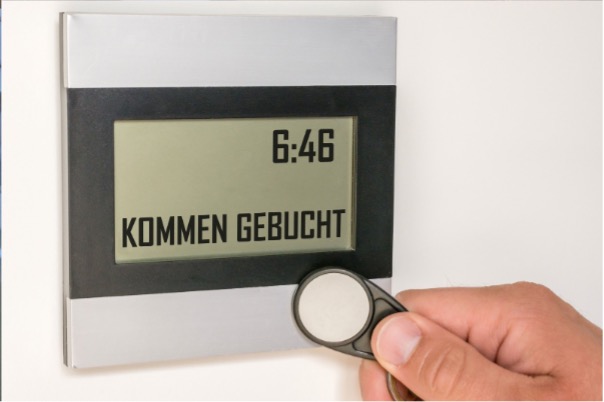Flexibility of working hours
More compatibility with flexible working hours
Those who want to reconcile family and career need one thing above all: time to take the children to school in the morning, time to pick them up from nursery and time to look after them in the afternoon. There are numerous models for organizing working hours individually to make this possible. However, the solution must suit both the company and the employees. We have put together an overview.

Instruments for flexible working hours
Check which models of flexible working time organization are compatible with the needs of your company and your employees:
-
Flexitime
All employees are at their workplace during certain core working hours. For example, this gives them the security of being able to talk to their colleagues during this time. However, the start and end times of the working day are flexible so that parents can coordinate childcare: One colleague starts the working day earlier, while another stays longer or vice versa.
-
Function time
Functional time continues the flexitime model. It allows your employees to flexibly organize not only the off-peak times, but the entire working day. There is no core working time. The focus is therefore not on availability at certain times, but on the fulfillment of your work task.
-
Working time account
A working time account is used to record working hours that exceed the contractually agreed number of hours or that have not been worked. These can be compensated at a later date. This not only offers the advantage that employees with children are flexible when they are needed by their family. It also allows them to react to fluctuations in orders, for example.
-
Annual working time
Working time is also recorded via working time accounts in the case of annual working time. However, the contractually calculated working hours do not relate to a week or a month, but to the entire year. The biggest advantage of this model is that the working hours for the whole year are allocated and organized by the employee themselves. This makes it possible to reduce and build up working hours to a greater extent with good predictability. The model can also be extended over a longer period of time - up to a lifetime working time.
-
Shift and night work
Some jobs require you to be present at certain times - sometimes early in the morning, late in the evening or at night. In this case too, solutions can be found together that also allow for childcare, for example. The prerequisite is that your employees have a say in shift planning.
-
Time value account
Time value accounts offer the opportunity to save up working time over a longer period of time, for example in the form of overtime, unused vacation days or financial benefits. Your employees can take time off at a later date for the hours they have built up and use these payments as time off. They will continue to receive their salary even during time off.
-
Flexible hourly volume
With this model, you can flexibly agree the volume of hours with the respective employee - to suit their current life situation.
-
Job sharing
In job sharing, several employees share a full-time position and the associated tasks and organize their pro rata working hours individually and usually on their own responsibility in joint coordination. The aim is that the position is always filled, but not always by the same person. This enables flexibility, but also requires a high level of communication.
Good company examples from practice
Where can we find help and advice?
The company network "Success Factor Family" offers you the opportunity to exchange ideas with other companies and experts. Membership is free of charge and includes practical information and support for implementation in your company.







